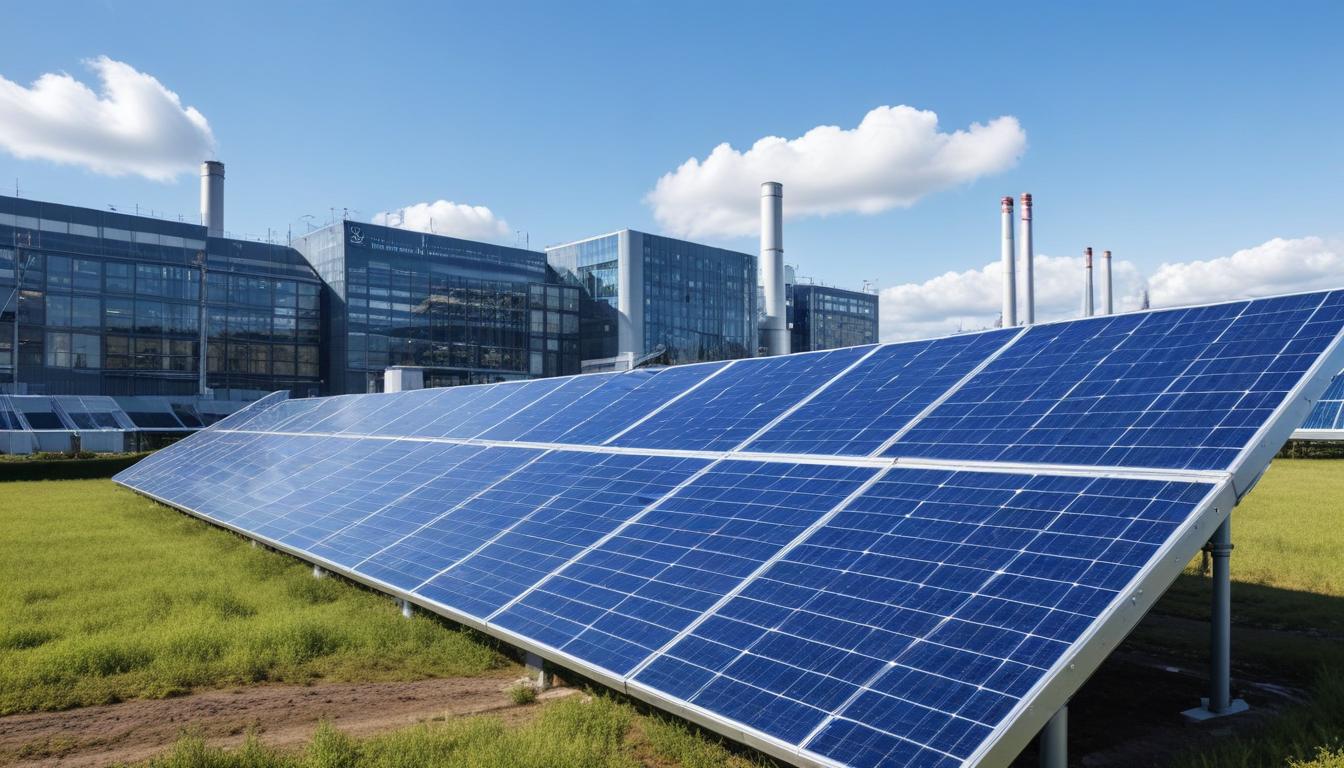
Green Tech Revolution: How Korea’s K-New Deal Is Paving the Path to Carbon Neutrality
As the world confronts the looming climate change crisis, nations are stepping up their efforts to transition to a more sustainable future. In 2020, South Korea made global headlines by announcing its K-New Deal, a visionary plan to foster economic recovery while simultaneously addressing environmental concerns. At the heart of this initiative is the Green New Deal, an ambitious project that aims to transition South Korea into a low-carbon economy and achieve carbon neutrality by 2050.
With more than $60 billion earmarked for green technology and sustainable energy, the K-New Deal reflects South Korea’s determination to become a global leader in environmental innovation. But can this bold plan transform South Korea into a carbon-neutral society? In this article, we explore the key components of the Green New Deal and how it is revolutionizing South Korea’s green tech landscape.
The K-New Deal: A Vision for a Carbon-Neutral Economy
The K-New Deal, unveiled in 2020, was initially conceived as a post-pandemic economic recovery plan. However, it quickly evolved into a multi-faceted strategy to tackle two significant challenges: boosting economic growth and addressing climate change. The Green New Deal is one of the three pillars of the initiative, alongside the Digital New Deal and the Human New Deal.
The Green New Deal’s primary focus is to overhaul South Korea’s energy infrastructure, shifting away from fossil fuels and embracing renewable energy sources. South Korea currently generates less than 7% of its electricity from renewables, but the Green New Deal aims to increase that share to 40% by 2034. Key sectors targeted for transformation include solar power, wind energy, electric vehicles (EVs), and hydrogen fuel cells.
“The Green New Deal is a comprehensive approach to not only recover from the economic crisis but to also prepare for the global climate crisis,” said President Moon Jae-in during the announcement of the initiative.
Solar, Wind, and Hydrogen: Powering the Future
One of the pillars of South Korea’s Green New Deal is the aggressive expansion of renewable energy. The government plans to invest heavily in solar power, aiming to make it a dominant energy source in the country. The construction of the Saemangeum Solar Power Project, one of the world’s largest solar farms, is a testament to this ambition. This project, expected to generate over 2.1 GW of electricity annually, will be capable of powering nearly 1 million homes.
Similarly, offshore wind energy is expected to play a crucial role in South Korea’s energy transformation. The Southwest Offshore Wind Project and other large-scale wind farms will contribute significantly to the country’s clean energy production.
South Korea is also betting on hydrogen fuel as a game-changer. It has set ambitious goals to lead the world in hydrogen technology. By 2040, the country plans to have 6.2 million hydrogen-powered vehicles on the road and 1,200 hydrogen refueling stations nationwide. South Korean companies like Hyundai are already making strides with their hydrogen-powered vehicles like the NEXO.
Sustainable Industries and Green Innovation
The Green New Deal is not just about clean energy; it also aims to transform South Korea’s industrial sectors to make them more sustainable. Key industries, including steel, petrochemicals, and manufacturing, are undergoing significant changes to reduce their carbon footprints.
For instance, POSCO, one of the world’s largest steelmakers, is pioneering the use of green hydrogen to replace coal in steel production, which could drastically cut carbon emissions. Meanwhile, SK Innovation has pledged to invest in carbon capture and storage (CCS) technologies to mitigate emissions from its refineries and petrochemical plants.
According to Dr. Kim Sun-jin, a researcher at the Korea Energy Research Institute, “The success of South Korea’s green transformation will depend on the rapid adoption of new technologies and a concerted effort from both public and private sectors.”
The Economic Impact: Job Creation and Growth
The K-New Deal is not just an environmental initiative; it also has a strong economic component. One of its key goals is to create green jobs and stimulate sustainable growth. By investing in renewable energy and eco-friendly infrastructure, the South Korean government expects to create over 1.9 million jobs by 2025.
This influx of jobs will come from sectors such as green construction, renewable energy manufacturing, and electric vehicle production. The government also hopes that South Korea’s leadership in green technology will attract foreign investment and foster innovation-driven growth.
The plan is already bearing fruit, with South Korean tech companies attracting global investment in fields like battery technology, solar energy solutions, and smart grid infrastructure.
South Korea’s Role in the Global Climate Movement
South Korea’s Green New Deal aligns with its international commitments to combat climate change. As a signatory of the Paris Agreement, South Korea has pledged to reduce its greenhouse gas emissions by 40% by 2030. The Korean government has also been actively involved in global dialogues on green hydrogen infrastructure and zero-emission technology.
South Korea is working closely with other countries, including Germany and Japan, to share knowledge and develop joint initiatives in sustainable energy. With the Green New Deal, South Korea is positioning itself as a leader in the global fight against climate change.
Challenges on the Path to Carbon Neutrality
Despite the impressive scope of the Green New Deal, South Korea faces significant challenges in its quest for carbon neutrality. One of the primary obstacles is the country’s continued reliance on coal for electricity generation. Although efforts are being made to retire coal plants, coal still accounts for nearly 28% of South Korea’s energy mix.
Another challenge is the high cost of renewable energy infrastructure. Building the necessary solar farms, wind turbines, and hydrogen refueling stations will require substantial investments and long-term planning. Ensuring public support for the transition and addressing potential job losses in traditional industries are additional hurdles the government must navigate.
A Roadmap for a Sustainable Future
South Korea’s Green New Deal marks a pivotal moment in the country’s approach to economic development and climate change. By focusing on green innovation, South Korea is not only transforming its energy infrastructure but also creating new opportunities for economic growth and job creation.
The path to carbon neutrality by 2050 is filled with challenges, but South Korea’s commitment to fostering renewable energy and green technology positions it as a key player in the global push for sustainability.
As the world watches South Korea’s progress, the Green New Deal could serve as a blueprint for other nations seeking to balance economic recovery with environmental stewardship.


